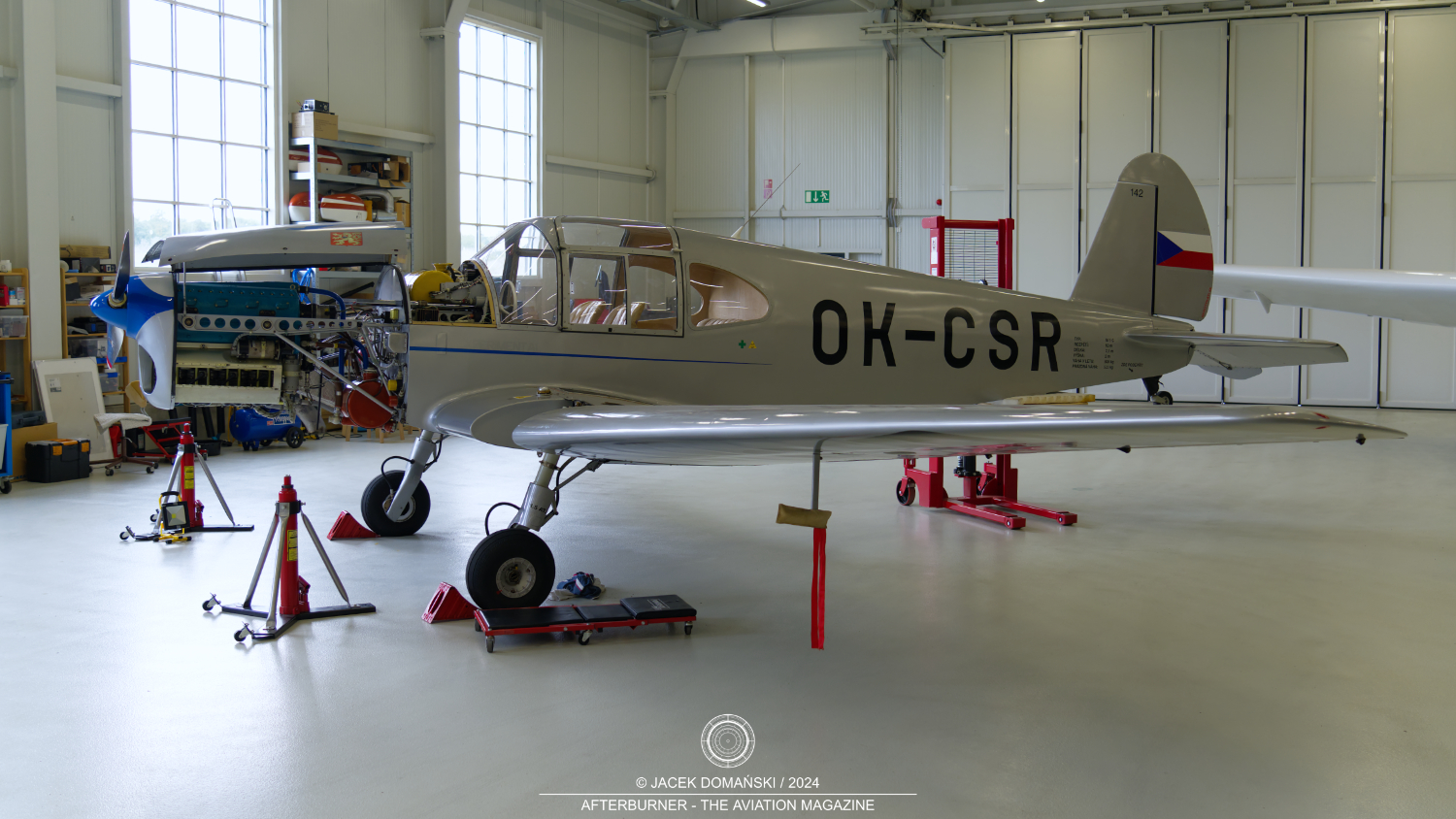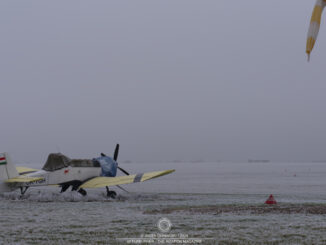 Mráz M-1C Sokol (c/n 142, OK-CSR from Točná Aviation Museum), exhibited during the open doors afternoon event at Letiště Točná / Točná Airport, Prague, October 2024.
Mráz M-1C Sokol (c/n 142, OK-CSR from Točná Aviation Museum), exhibited during the open doors afternoon event at Letiště Točná / Točná Airport, Prague, October 2024.
On 9th March 1946, the first post-war Czechoslovak aircraft Mráz M-1 Sokol (English: falcon), performed its maiden flight. The aircraft was developed in Továrna letadel ing. J. Mráz (Aircraft Works of engr. J. Mráz) in Choceň, by Zdeněk Rublič and his design team.
The idea of light, all-wooden sport monoplane was being developed by Rublič already during the years of the World War II and the M-1 project was secretly launched in the final stage of the war, despite the German occupation. The aeroplane design was partially based on Beneš-Mráz Bibi, pre-war two-seat touring aircraft made by the company in the late 1930s.
The first prototype of the M-1 was powered by 105 hp four-cylinder air-cooled Walter Minor 4-III engine and equipped with two-blade wooden propeller, manual-powered retractable undercarriage and two seats in side-by-side configuration. This initial version of the aeroplane was designated M-1A.
Shortly after, another prototype of the aeroplane was made, this time powered by ZLAS Toma 4 engine generating the same power as its predecessor. The modified aircraft was designated M-1B and performed its first flight on 19th May 1946. However, no more examples of that variant were built.
In order to meet the market demand for touring aircraft able to carry more than two people, Rublič modified the initial design by adding the third seat, placed centrally behind the front ones. The three-seater, designated M-1C, successfully completed its maiden flight on 16th February 1948.
In October of the same year, another variant of the aircraft, featuring modified canopy that provided much better visibility, was introduced into market and designated M-1D.
A floatplane designated M-1E was the final variant of the aeroplane. That last modification was developed in September of 1949 and built in only one example. After some evaluation flights, the sole existing example of the aircraft was later sold to a customer in Finland.
The M-1 Sokol quickly achieved commercial success and found its customers all over the world. Moreover, the aeroplane set several domestic and international aviation records in maximum speed, speed over a recognised course and distance categories.
However, production of the M-1 was ceased in 1950, with less than 300 examples of the aeroplane made in total. The reasons were both all-wooden construction of the aircraft (while the growing market trend was to build aeroplanes of metal construction) and deteriorating international relations between the Eastern bloc countries and the Western world.
The M-1C OK-CSR featured within our Photo of the Week series was made in 1947. Next year, its owner used the aeroplane to escape from Czechoslovakia to the West Germany. The aircraft was then used in the West European countries and returned to Czechoslovakia only in 1989.
In 2013, the M-1C was acquired by Točná Aviation Museum and became part of the aircraft collection located at Letiště Točná / Točná Airport in Prague, the Czech Republic.



